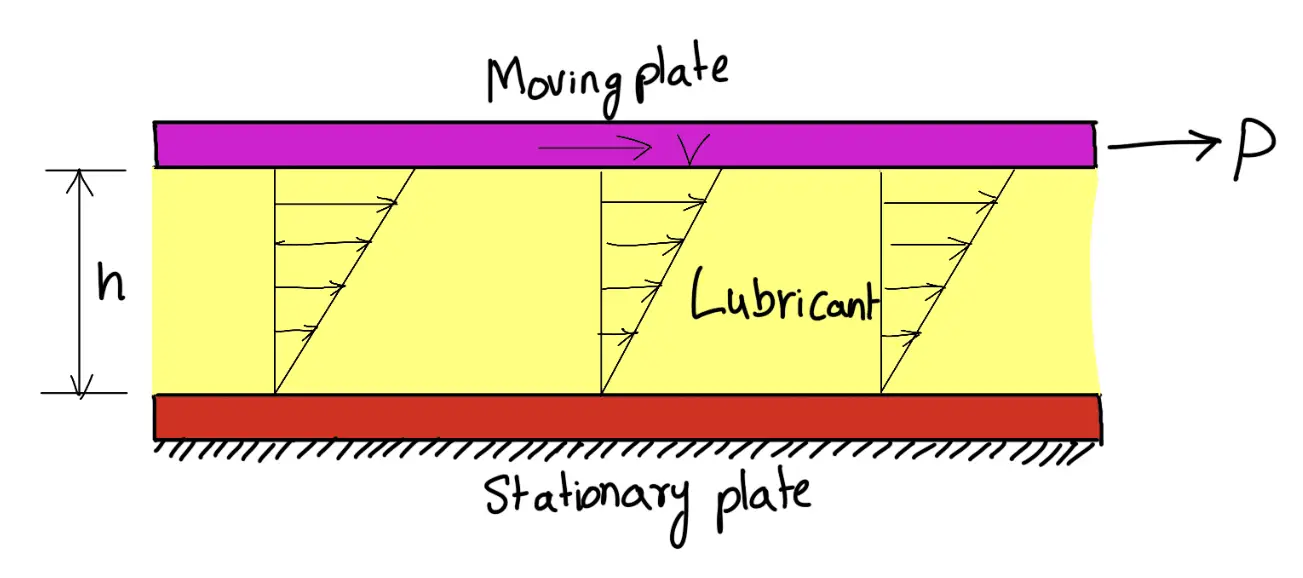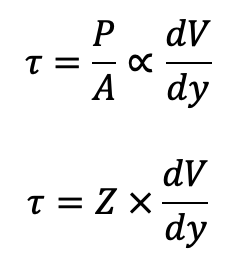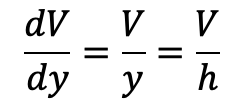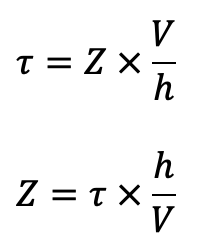The lubricants are used in bearings to reduce friction between the rubbing surfaces and to carry away the heat generated by friction. In the previous article, we discussed the different types of Bearings. Sliding Contact Bearings are one of the types of bearings depending upon the nature of contact. Wedge Film Journal Bearings are Hydrodynamic Lubricated Bearings that come under Sliding Contact Bearings. Let us discuss the different Lubricants used in Bearings and their Properties.


A bearing is a machine element that supports another moving machine element known as a journal. It enables a relative motion between the contact surfaces of the members while carrying the load. While doing so a certain amount of power is wasted in overcoming frictional resistance due to the relative motion between the contact surfaces.
A little consideration will show that a certain amount of power is wasted in overcoming frictional resistance due to the relative motion between the contact surfaces. There will be rapid wear if the rubbing surfaces are in direct contact. To reduce frictional resistance and wear and sometimes to carry away the heat generated, a layer of fluid known as lubricant may be provided. The lubricant used to separate the journal and bearing is usually a mineral oil refined from petroleum, but vegetable oils, silicon oils, greases, etc., may be used.
Lubricants used in Bearings
The lubricants are used in bearings to reduce friction between the rubbing surfaces and to carry away the heat generated by friction. It also protects the bearing against corrosion. All lubricants are classified into the following three groups:
- Liquid
- Semi-liquid
- Solid
The liquid lubricants usually used in bearings are mineral oils and synthetic oils. The mineral oils are most commonly used because of their cheapness and stability. Liquid lubricants are usually preferred where they may be retained.
Grease is a semi-liquid lubricant having a higher viscosity than oils. The greases are employed where slow speed and heavy pressure exist and where oil drip from the bearing is undesirable.
Solid lubricants are useful in reducing friction where oil films cannot be maintained because of pressures or temperatures. They should be softer than the materials being lubricated. Graphite is the most common of the solid lubricants either alone or mixed with oil or grease.
Properties of Lubricants
1. Viscosity
It is the measure of the degree of fluidity of a liquid. It is a physical property by which an oil can form, retain, and offer resistance to shearing a buffer film under heat and pressure. The greater the heat and pressure, the greater viscosity is required of a lubricant to prevent thinning and squeezing out of the film.
The fundamental meaning of viscosity may be understood by considering a flat plate moving under a force P parallel to a stationary plate, the two plates being separated by a thin film of a fluid lubricant of thickness h, as shown in the following figure.


The particles of the lubricant adhere strongly to the moving and stationary plates. The motion is accompanied by a linear slip or shear between the particles throughout the entire height (h) of the film thickness. If A is the area of the plate in contact with the lubricant, then the unit shear stress is given by
τ = P / A
According to Newton’s law of viscous flow, the magnitude of this shear stress varies directly with the velocity gradient (dV / dy). It is assumed that
- The lubricant completely fills the space between the two surfaces
- The velocity of the lubricant at each surface is the same as that of the surface
- Any flow of the lubricant perpendicular to the velocity of the plate is negligible


where Z is a constant of proportionality and is known as the absolute viscosity (or simply viscosity) of the lubricant.
When the thickness of the fluid lubricant is small which is the case for bearings, then the velocity gradient is very nearly constant as shown in the above figure, so that


Let us substitute in the above equation


When τ is in N/m2, h is in metres and V is in m/s, then the unit of absolute viscosity is given by


However, the common practice is to express the absolute viscosity in mass units, such that


Thus the unit of absolute viscosity in S.I. units is kg / m-s.
The viscosity of the lubricant is measured by Saybolt universal viscometer. It determines the time required for a standard volume of oil at a certain temperature to flow under a certain head through a tube of standard diameter and length. The time so determined in seconds is the Saybolt universal viscosity. In order to convert Saybolt universal viscosity in seconds to absolute viscosity (in kg / m-s), the following formula may be used:
Z = Specific gravity of oil (0.00022S – (0.18 / S) kg / m-s
Where
Z = Absolute viscosity at temperature t in kg / m-s
S = Saybolt universal viscosity in seconds
The variation of absolute viscosity with temperature for commonly used lubricating oils is shown in the following Table.
| S. No. | Type of oil | Absolute viscosity in kg / m-s at a temperature in °C | |||||||||||
| 30 | 35 | 40 | 45 | 50 | 55 | 60 | 65 | 70 | 75 | 80 | 90 | ||
| 1 | SAE 10 | 0.05 | 0.036 | 0.027 | 0.0245 | 0.021 | 0.017 | 0.014 | 0.012 | 0.011 | 0.009 | 0.008 | 0.005 |
| 2 | SAE 20 | 0.069 | 0.055 | 0.042 | 0.034 | 0.027 | 0.023 | 0.02 | 0.017 | 0.014 | 0.011 | 0.01 | 0.0075 |
| 3 | SAE 30 | 0.13 | 0.1 | 0.078 | 0.057 | 0.048 | 0.04 | 0.034 | 0.027 | 0.022 | 0.019 | 0.016 | 0.01 |
| 4 | SAE 40 | 0.21 | 0.17 | 0.12 | 0.096 | 0.78 | 0.06 | 0.046 | 0.04 | 0.034 | 0.027| | 0.022 | 0.013 |
| 5 | SAE 50 | 0.3 | 0.25 | 0.2 | 0.17 | 0.12 | 0.09 | 0.076 | 0.06 | 0.05 | 0.038 | 0.034 | 0.02 |
| 6 | SAE 60 | 0.45 | 0.32 | 0.27 | 0.2 | 0.16 | 0.12 | 0.09 | 0.072 | 0.057 | 0.046 | 0.04 | 0.025 |
| 7 | SAE 70 | 1 | 0.69 | 0.45 | 0.31 | 0.21 | 0.165 | 0.12 | 0.087 | 0.067 | 0.052 | 0.043 | 0.033 |
2. Oiliness
It is a joint property of the lubricant and the bearing surfaces in contact. It is a measure of the lubricating qualities under boundary conditions where base metal to metal is prevented only by absorbed film. There is no absolute measure of oiliness.
3. Density
This property has no relation to lubricating value but is useful in changing the kinematic viscosity to absolute viscosity. Mathematically
Absolute viscosity = ρ × Kinematic viscosity (in m2/s)
where ρ = Density of the lubricating oil.
The density of most of the oils at 15.5°C varies from 860 to 950 kg / m3 (the average value may be taken as 900 kg / m3 ). The density at any other temperature (t) may be obtained from the following relation, i.e.
ρt = ρ15.5 – 0.000657t
where ρ15.5 = Density of oil at 15.5° C
4. Viscosity index
The term viscosity index is used to denote the degree of variation of viscosity with temperature.
5. Flash point
It is the lowest temperature at which an oil gives off sufficient vapor to support a momentary flash without actually setting fire to the oil when a flame is brought within 6 mm at the surface of the oil.
6. Fire point
It is the temperature at which an oil gives off sufficient vapor to burn it continuously when ignited.
7. Pour point or freezing point
It is the temperature at which an oil will cease to flow when cooled.





